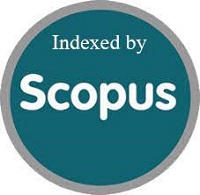Investigating the Factor Structure of the Myers-Briggs Type Indicator (MBTI): Case of Indonesian Students
DOI:
https://doi.org/10.15408/jp3i.v14i2.31689Keywords:
item factor analysis, rasch measurement model, myers-briggs type indicator test, studentsAbstract
Psychological tests require continuous refinement and evaluation to ensure their effectiveness. This study aimed to evaluate the factor structure, invariance, item quality, and differential item functioning (DIF) of the 60-item Myers–Briggs Type Indicator (MBTI) among Indonesian students using modern psychometric methods. Involving 7,526 participants, the results of the item factor analysis (IFA) indicated that a single-factor model for each MBTI dimension adequately fit the data, supporting satisfactory construct validity. The Infit and Outfit MNSQ values ranged between 0.5 and 1.5, demonstrating good item quality. Moreover, no gender bias was detected based on the DIF Contrast effect size, indicating that MBTI items function equivalently for male and female students. These findings provide strong empirical evidence for the psychometric validity and reliability of the MBTI in the Indonesian context and represent the first large-scale study contributing to the refinement and modernization of the instrument in alignment with national legislative standards for psychological test use.
References
Azwar, S. (2016). Konstruksi tes kemampuan kognitif edisi 1 cetakan I. Yogyakarta: Pustaka Pelajar.
Barbeau, K., Boileau, K., Sarr, F., & Smith, K. (2019). Path analysis in Mplus: A tutorial using a conceptual model of psychological and behavioral antecedents of bulimic symptoms in young adults. The Quantitative Methods for Psychology, 15(1), 38-53. https://doi.org/10.20982/tqmp.15.1.p038
Bess, T. L., Harvey, R. J., & Swartz, D. (2003). Hierarchical confirmatory factor analysis of the Myers-Briggs Type Indicator. In Annual Conference of the Society for Industrial and Organizational Psychology, Orlando, 1-13. https://doi.org/10.1037/E518712013-042
Borsboom, D., & Molenaar, D. (2015). Psychometrics. In J. O. Ramsay (Eds.). International Encyclopedia of the Social & Behavioral Sciences (2nd Ed.). (vol. 18, pp. 12416–12422). Elsevier Ltd. https://doi.org/10.1016/B978-0-08-097086-8.43079-5
Brown, T. A. (2003). Confirmatory factor analysis of the Penn State Worry Questionnaire: Multiple factors or method effects?. Behaviour Research and Therapy, 41(12), 1411–1426. https://doi.org/10.1016/S0005-7967(03)00059-7
Hair, J. F., Hult, G. T. M., Ringle, C., & Sarstedt, M. (2017). A primer on partial least squares structural equation modeling (PLS-SEM) (2nd Ed.). Thousand Oaks, CA: SAGE.
Hastjarjo, T. D. (2011). Validitas eksperimen. Buletin Psikologi, 19(2), 70-80. https://doi.org/10.22146/bpsi.11558
Kaplan, R. M., & Saccuzzo, D. P. (2012). Pengukuran psikologi: Prinsip, penerapan, dan isu edisi 7. Terjemahan oleh E. P. Widodo. Jakarta: Salemba Humanika.
Mayfield, J., & Mayfield, M. (2012). The relationship between leader motivating language and self-efficacy: A partial least squares model analysis. The Journal of Business Communication (1973), 49(4), 357–376. https://doi.org/10.1177/0021943612456036
Myers, I. B., McCaulley, M. H., Quenk, N. L., & Hammer, A. L. (1998). MBTI manual: A guide to the development and use of the Myers-Briggs Type Indicator (3rd Ed.). California: Consulting Psychologists Press, Inc.
Naisaban, L. (2003). Psikologi Jung: Tipe kepribadian manusia dan rahasia sukses dalam hidup (Tipe kebijaksanaan Jung). Jakarta: PT Grasindo.
Natalya, L., & Purwanto, C. V. (2018). Exploratory and confirmatory factor analysis of the academic motivation scale (AMS)–bahasa Indonesia. Makara Human Behavior Studies in Asia, 22(1), 29-42. https://doi.org/10.7454/hubs.asia.2130118
Periantalo, J., & Azwar, S. (2017). Pengembangan skala kepribadian siswa SMA dari tipologi kepribadian Jung dan Myers-Briggs. Jurnal Sains Sosio Humaniora, 1(2), 191-207. https://doi.org/10.22437/jssh.v1i2.4301
Pittenger, D. J. (2005). Cautionary comments regarding the Myers-Briggs Type Indicator. Consulting Psychology Journal: Practice and Research, 57(3), 210-221. https://doi.org/10.1037/1065-9293.57.3.210
Prudon, P. (2015) Confirmatory factor analysis as a tool in research using questionnaires: A critique. Comprehensive Psychology, 4(10), 1-18. https://doi.org/10.2466/03.CP.4.10
Quenk, N. L. (2009). Essentials of Myers-Briggs Type Indicator assessment (2nd Ed.). Canada: John Wiley & Sons, Inc.
Sukardi, M. (2015). Evaluasi pendidikan: Prinsip & operasionalnya edisi 1 cetakan VIII. Jakarta: PT Bumi Aksara.
Supratiknya, A. (2014). Pengukuran psikologis. Yogyakarta: Sanata Dharma University Press Anggota APPTI.
Susanto, E., & Mudaim. (2017). Pengembangan inventori MBTI sebagai alternatif instrumen pengukuran tipe kepribadian. Journal of Educational Counseling, 1(1), 41-52. https://doi.org/10.30653/001.201711.5
Van Zyl, C. J. J., & Taylor, N. (2012). Evaluating the MBTI Form M in a South African context. SA Journal of Industrial Psychology, 38(1), 1-15. https://doi.org/10.4102/sajip.v38i1.977
Downloads
Published
Issue
Section
License
Copyright (c) 2025 Dwi Yan Nugraha, Widyastuti Widyastuti, Ahmad Ridfah

This work is licensed under a Creative Commons Attribution-ShareAlike 4.0 International License.



